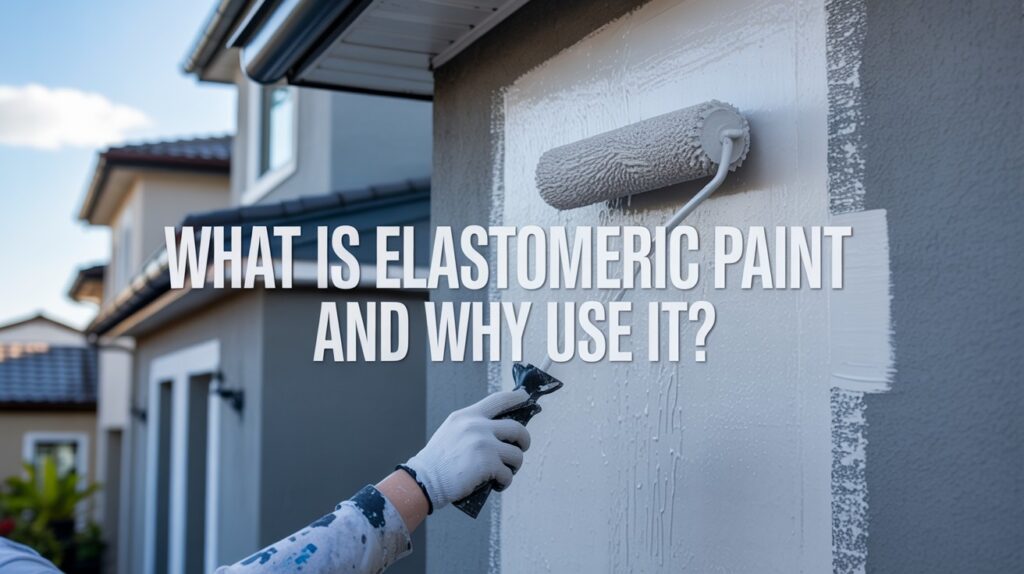When protecting your home’s exterior surfaces from weather damage, choosing the right coating can make all the difference.
Elastomeric paint offers a specialized solution that goes far beyond what traditional paints can provide.
This high-performance coating creates a flexible, waterproof barrier that moves with your building as it expands and contracts through seasonal changes.
Unlike conventional paints that crack and peel under stress, elastomeric paint stretches up to 600% of its original size while maintaining complete protection.
This remarkable flexibility, combined with superior waterproofing capabilities and extended durability, makes it an ideal choice for masonry, stucco, and concrete surfaces exposed to harsh weather conditions.
Understanding when and how to use this specialized coating can save you money and protect your investment for years to come.
Understanding Elastomeric Paint
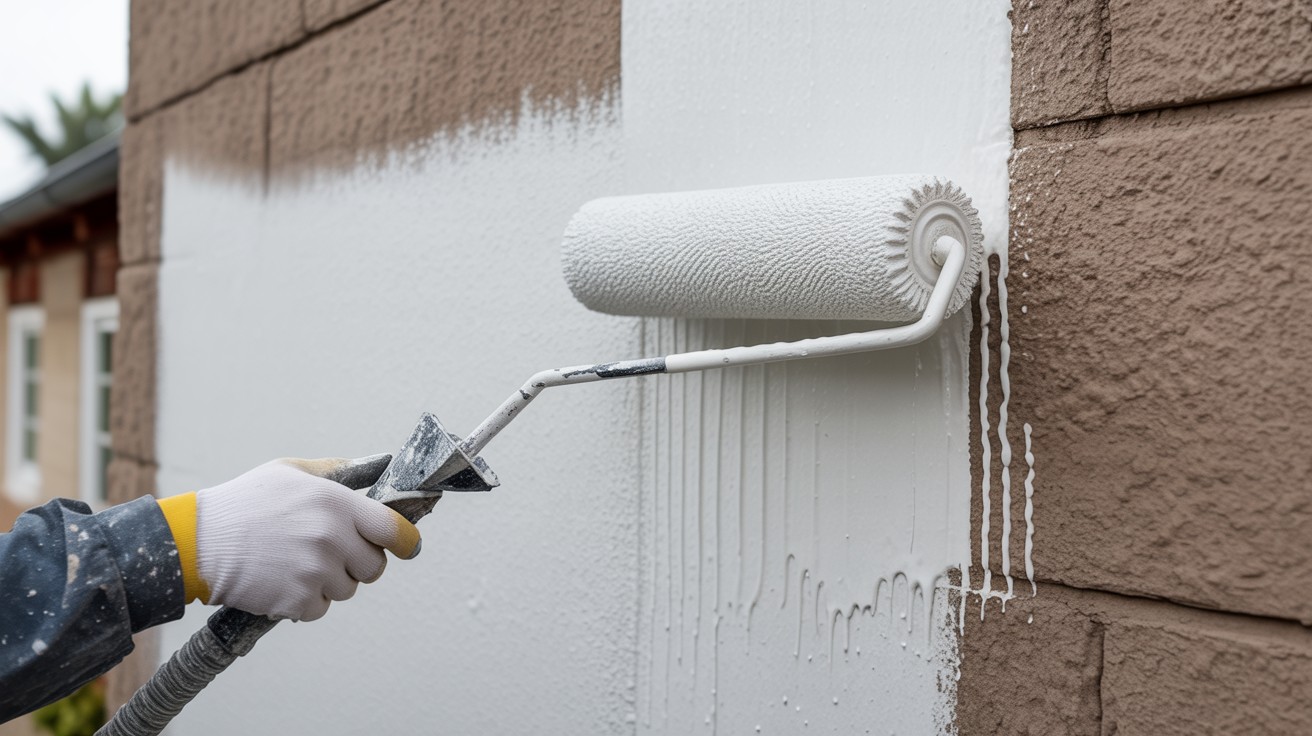
What Is Elastomeric Paint?
Elastomeric paint represents a specialized high-build coating engineered for superior flexibility and weather resistance.
This advanced formula is designed primarily for masonry, stucco, and concrete surfaces that experience significant thermal expansion and contraction cycles.
Applied as a liquid coating, elastomeric paint dries into a thick, stretchable, waterproof film that maintains its integrity even under stress.
Unlike traditional paints that can crack or peel when surfaces move, this coating accommodates building movement while maintaining protective coverage.
How It Works
Once applied and cured, elastomeric paint forms a thick, rubber-like membrane that can stretch up to 600% of its original size without breaking.
This remarkable flexibility allows the coating to expand and contract along with the building materials as temperatures change throughout seasons.
The membrane actively helps prevent water intrusion by creating a continuous barrier that seals minor cracks and imperfections in the substrate.
As buildings naturally settle and shift, the coating moves with the surface rather than cracking, maintaining long-term protection against moisture damage and surface deterioration.
This dynamic response to building movement makes elastomeric paint particularly valuable for structures in climates with significant temperature variations or areas prone to minor structural movement.
Benefits of Elastomeric Paint
Elastomeric paint offers waterproofing, flexibility, durability, thick coverage, and weather resistance that surpasses conventional exterior paint systems.
1. Waterproof Barrier
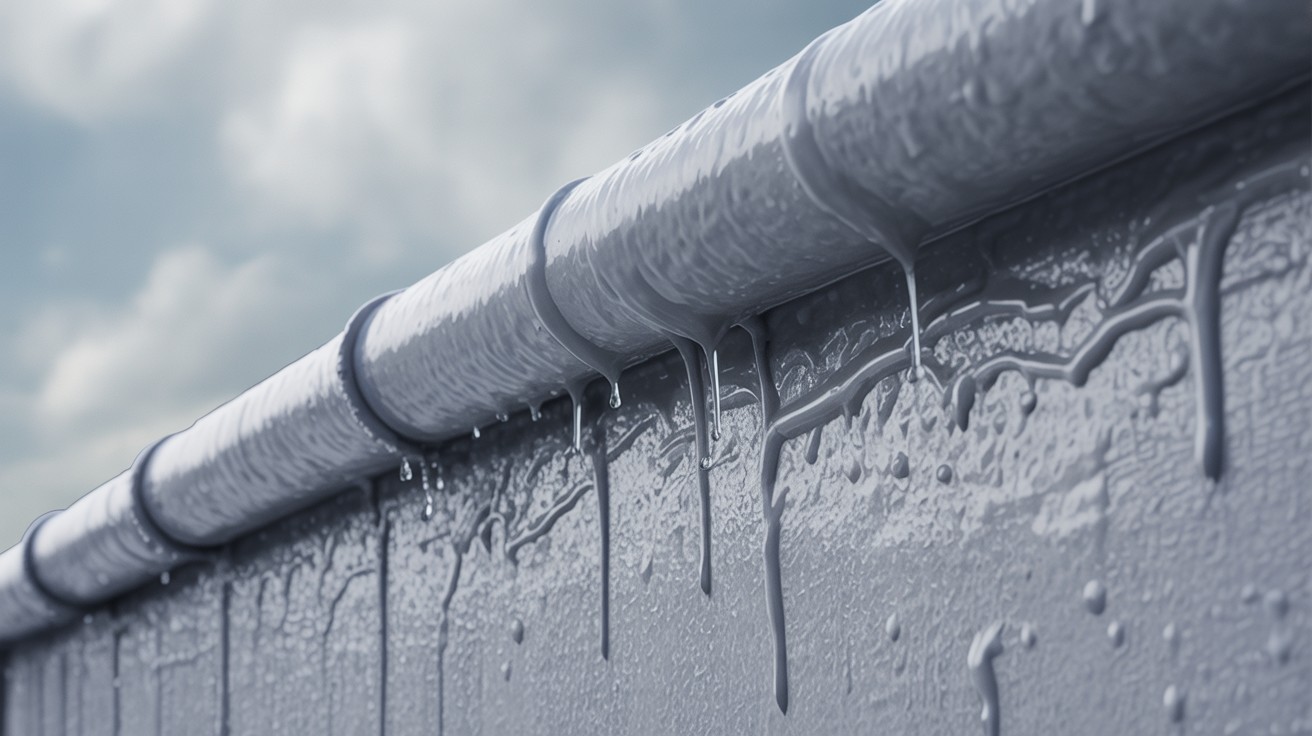
- Elastomeric paint creates an impermeable seal that effectively blocks rain, humidity, and moisture from penetrating exterior surfaces.
- This waterproofing capability makes it particularly valuable for protecting exterior walls and stucco surfaces that are constantly exposed to weather elements.
- The coating’s ability to form a continuous membrane means water cannot find entry points through minor surface imperfections, providing comprehensive protection for the underlying substrate.
2. Superior Flexibility
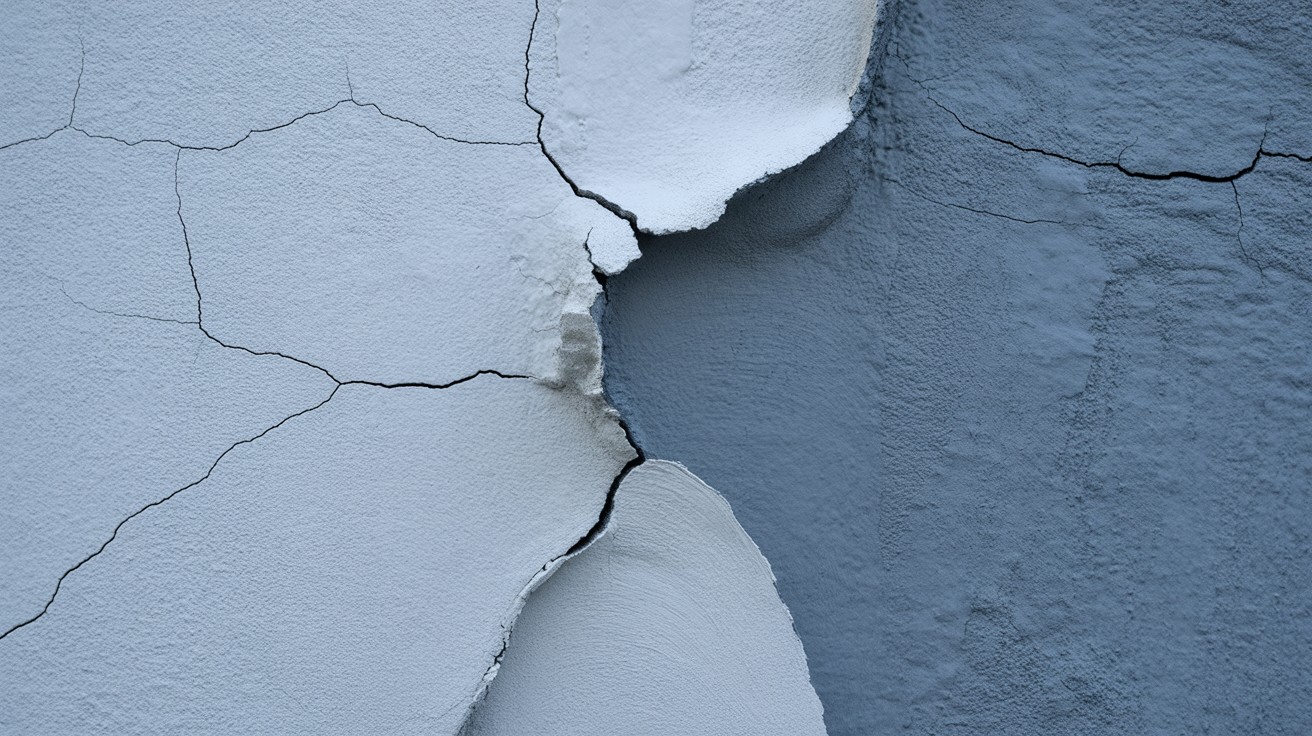
- The coating’s exceptional ability to stretch without cracking sets it apart from conventional paint systems.
- This flexibility allows the membrane to accommodate shifting surfaces caused by thermal expansion, structural settling, or seasonal temperature changes.
- Buildings naturally move as materials expand in heat and contract in cold, and elastomeric paint moves with them, maintaining protective coverage throughout these cycles.
3. Long-Lasting Protection
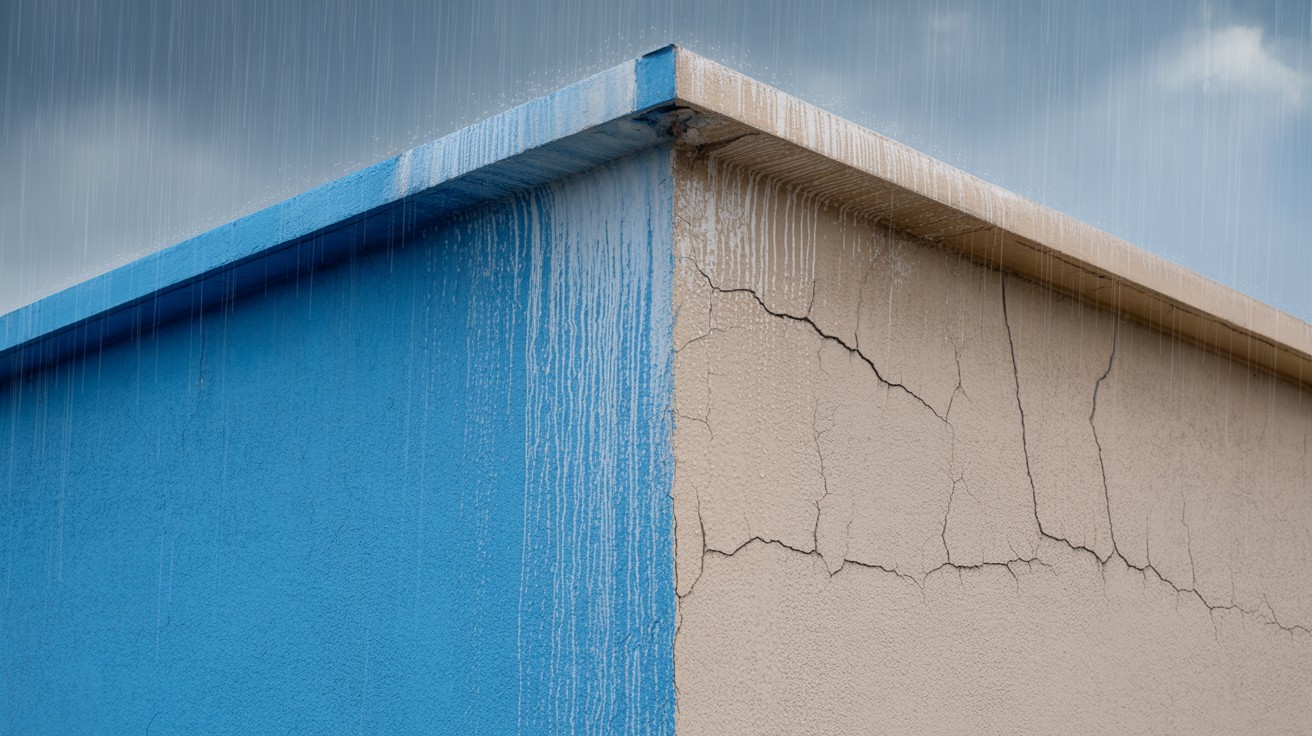
- When properly applied, elastomeric paint provides durable protection for 10 or more years, significantly outlasting standard exterior coatings.
- This longevity comes from its resistance to peeling, cracking, and weather damage that typically plague conventional paint systems.
- The extended lifespan makes it a cost-effective choice despite higher initial material costs, as it reduces the frequency of repainting projects.
4. Thick Coverage
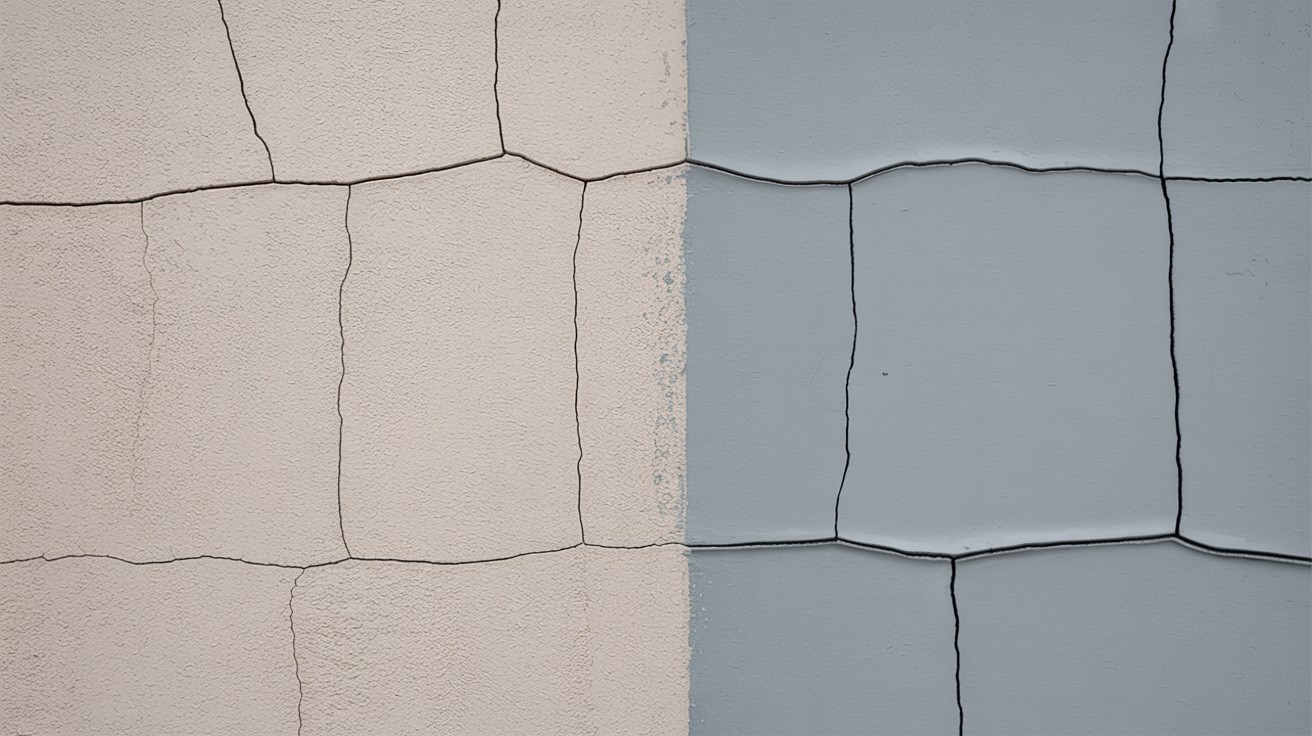
- Elastomeric paint applies up to 10 times thicker than traditional paint, creating a substantial build that can bridge hairline cracks and smooth out uneven surface textures.
- This thickness provides both aesthetic and protective benefits.
- The substantial film build helps create a more uniform appearance on rough surfaces while adding an extra layer of protection against the elements.
5. Storm and UV Resistance
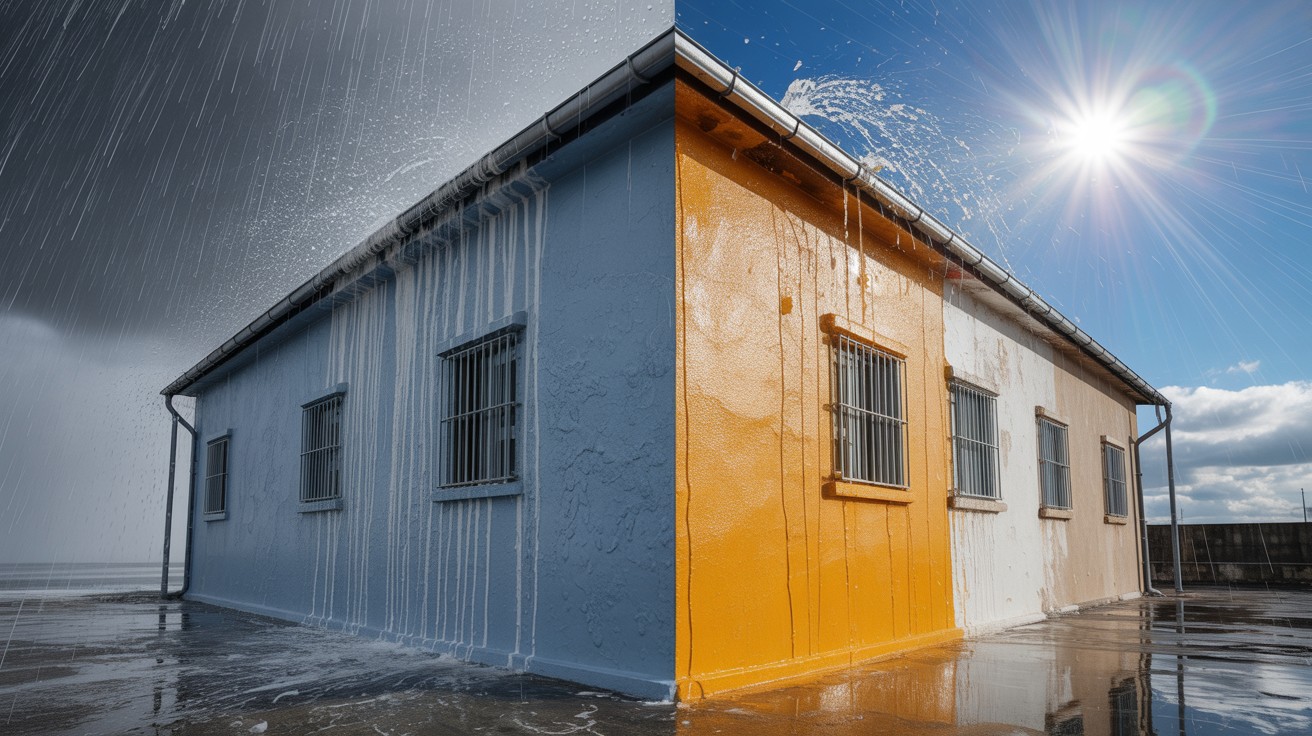
- The coating demonstrates exceptional performance against wind-driven rain and intense UV exposure that can quickly degrade standard paints.
- This makes it particularly valuable in extreme weather climates where conventional coatings fail prematurely.
- Its ability to maintain integrity during severe weather events provides peace of mind for property owners in hurricane-prone or high-UV regions.
When to Use Elastomeric Paint
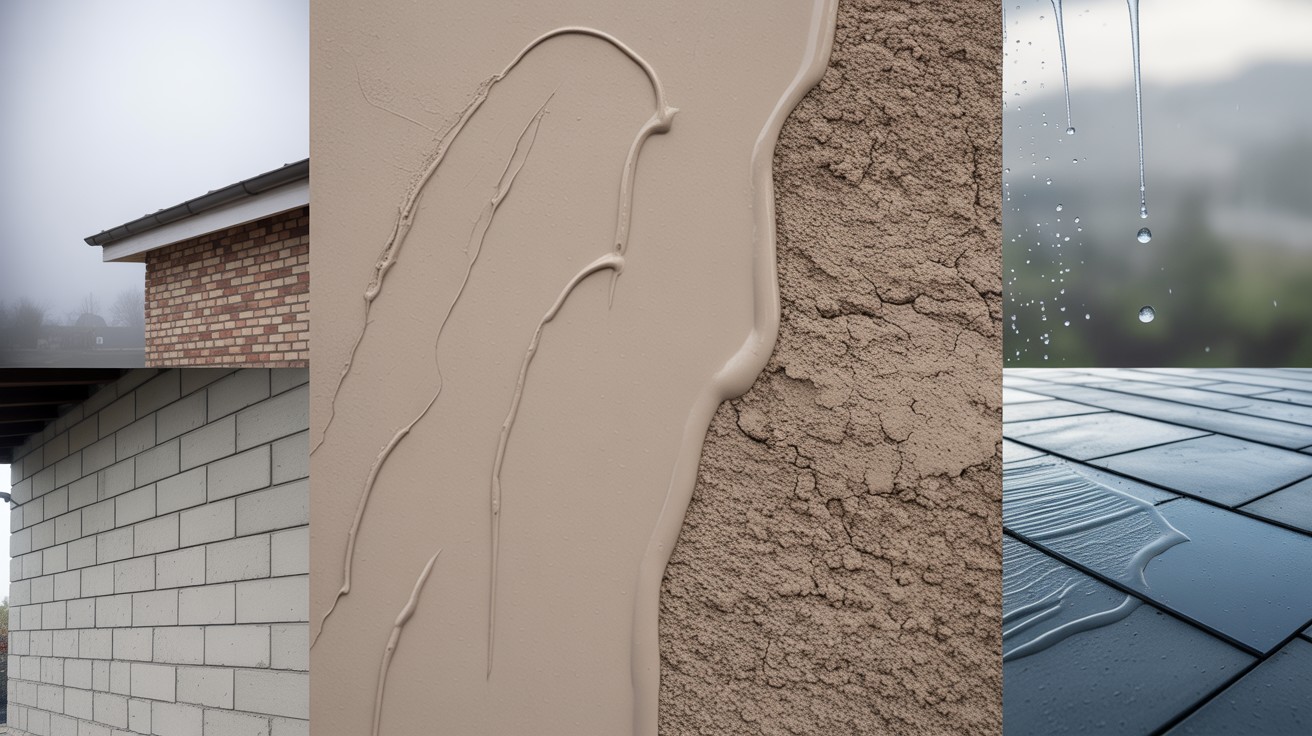
Elastomeric paint works best on masonry surfaces and situations requiring waterproofing, crack coverage, or first-time coating applications.
Best Surfaces for Application
Elastomeric paint performs exceptionally well on stucco, masonry, poured concrete, and concrete blocks where its thick build and flexibility provide maximum benefit.
These porous surfaces allow the coating to bond effectively while taking advantage of its waterproofing properties.
The coating also works on roofs, bricks, wood, and metal surfaces, though these applications typically require specific surface preparation.
Proper cleaning, priming, or etching may be necessary to ensure adequate adhesion on non-porous or previously coated surfaces.
Ideal Scenarios
Properties in humid or rainy climates benefit significantly from elastomeric paint’s waterproofing capabilities.
The coating excels at creating a moisture barrier that prevents water damage in areas with frequent precipitation or high humidity levels.
This paint system works particularly well for covering small cracks or surface imperfections that would be difficult to repair individually.
Rather than extensive patching work, the thick coating can bridge minor defects while providing long-term protection.
First-time coatings on unpainted masonry represent another ideal application.
The coating bonds directly to clean masonry surfaces, creating a durable protective system that can last for decades with proper application and maintenance.
Common Drawbacks to Consider
Elastomeric paint has higher costs, requires specialized application techniques, and may trap moisture in wall systems.
Higher Cost
Elastomeric paint typically costs up to 50% more than standard exterior paint, making it a significant upfront investment.
The higher material cost stems from specialized polymers and additives that provide the coating’s unique properties.
Labor costs also increase due to the thicker application requirements and additional surface preparation often needed.
Projects may take longer to complete, as the coating requires careful application techniques to achieve optimal results.
Application Challenges
Successful elastomeric paint application often requires professional equipment and specialized techniques that go beyond standard painting methods.
The thick consistency demands specific spray equipment or specialized rollers to achieve proper coverage and finish quality.
Incorrect application can lead to lumps, uneven thickness, or bonding issues that compromise the coating’s performance.
Poor technique may result in areas that fail prematurely or don’t provide adequate protection, requiring costly repairs or reapplication.
Limited Breathability
Unlike some traditional paints, elastomeric coatings create a relatively impermeable barrier that doesn’t allow moisture vapor to escape from behind the wall.
This lack of breathability can become problematic if moisture already exists within the wall system.
Trapped moisture behind the coating can lead to paint failure, substrate damage, or mold growth issues.
Proper moisture assessment and remediation must occur before application to prevent these complications from developing over time.
Final Thoughts: Is Elastomeric Paint Right for Your Project?
Choosing elastomeric paint requires careful evaluation of your specific situation.
Consider your surface condition, local climate patterns, and any existing paint layers that might affect application success.
Your budget should account for both higher material costs and potential professional installation requirements.
Think about your long-term durability expectations and actual waterproofing needs—not every project requires this specialized coating.
Climate conditions and building age play significant roles in determining whether the investment makes sense for your property.
Consult a qualified painting professional to properly assess your stucco or masonry surfaces before making a decision.
Choose elastomeric paint only when your surface conditions and environmental factors truly demand its specialized properties, as standard paints may serve simpler applications more cost-effectively.
Frequently Asked Questions
How long does elastomeric paint last compared to regular paint?
Elastomeric paint typically lasts 10-15 years when properly applied, significantly longer than standard exterior paint which may need replacement every 5-7 years. The extended lifespan helps offset the higher initial cost through reduced maintenance frequency.
Can I apply elastomeric paint over existing paint?
Yes, but proper surface preparation is crucial for good adhesion. The existing paint must be clean, well-bonded, and compatible with the elastomeric coating to prevent peeling or failure.
Is elastomeric paint suitable for all climates?
Elastomeric paint performs best in areas with temperature fluctuations, high humidity, or frequent rain exposure. It may be unnecessary in consistently dry climates where standard paint provides adequate protection.
How thick should elastomeric paint be applied?
Elastomeric paint should be applied at 10-15 mils thick, roughly 10 times thicker than regular paint. This substantial build provides the flexibility and waterproofing properties that make the coating effective.
Can I paint over elastomeric paint later?
Yes, but you must use another elastomeric coating or specially formulated paints designed for flexible substrates. Regular paint may crack when applied over the flexible elastomeric surface.

